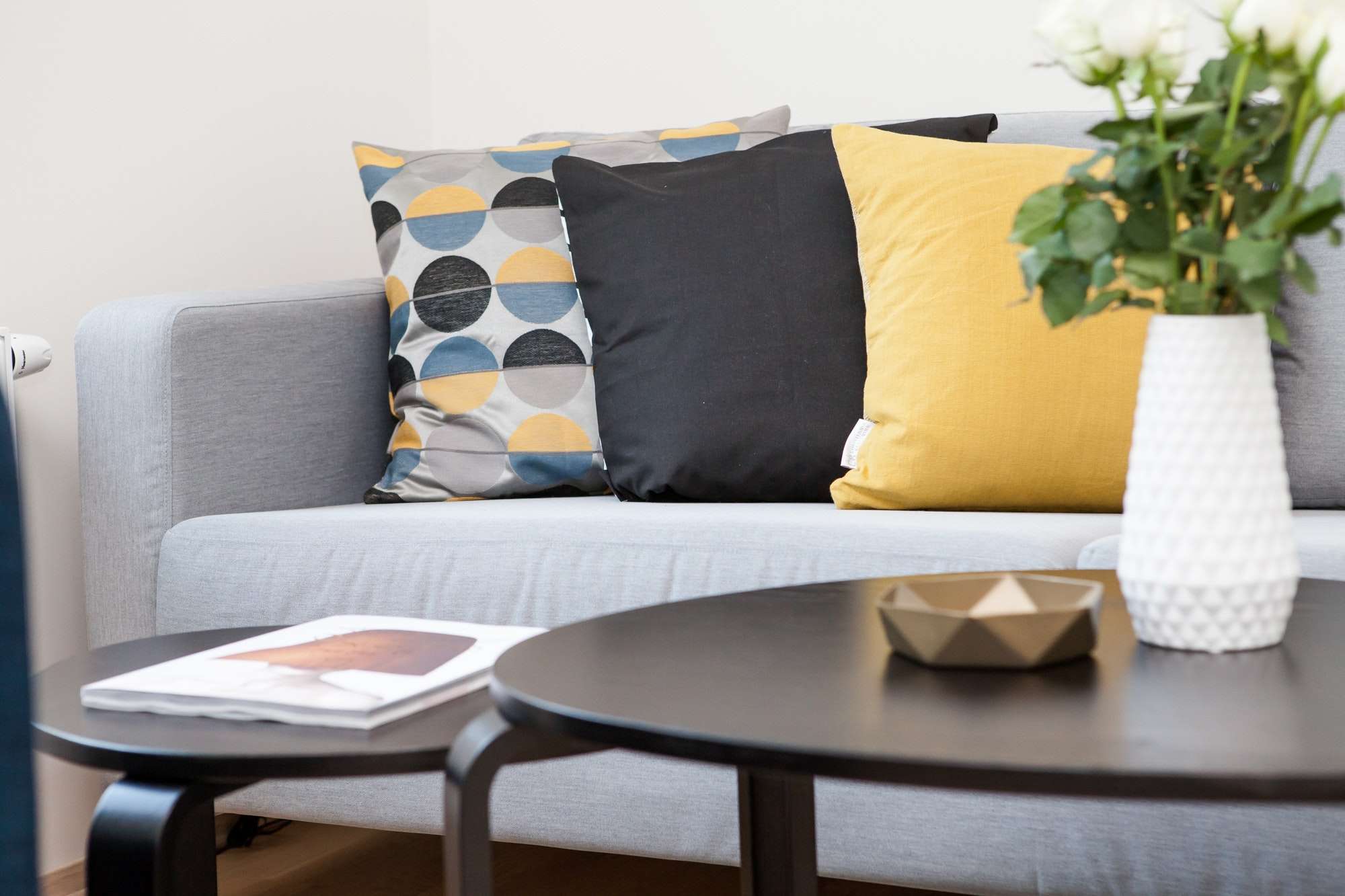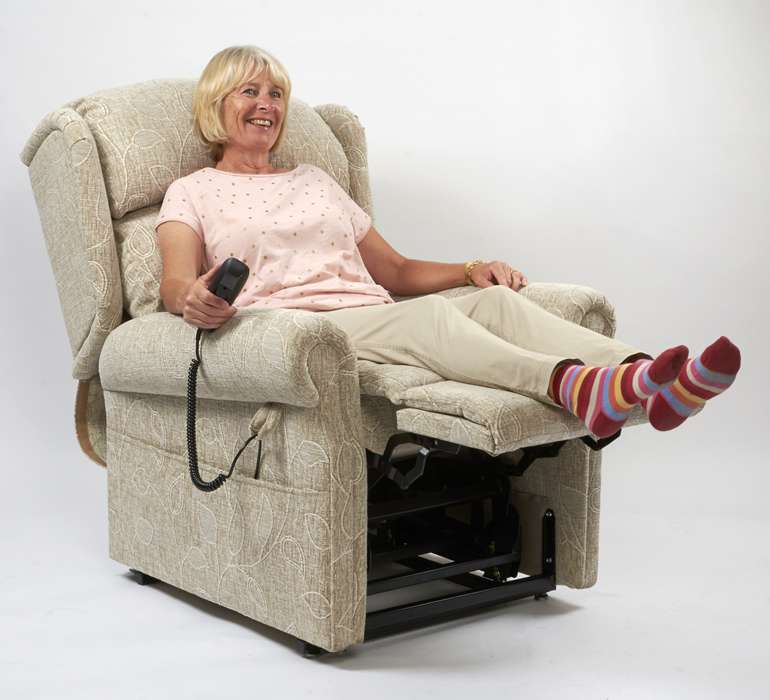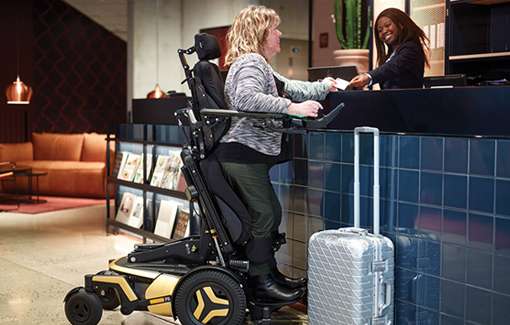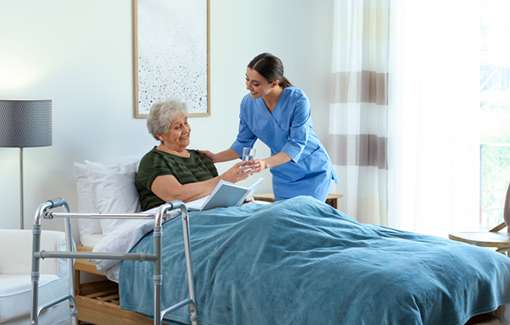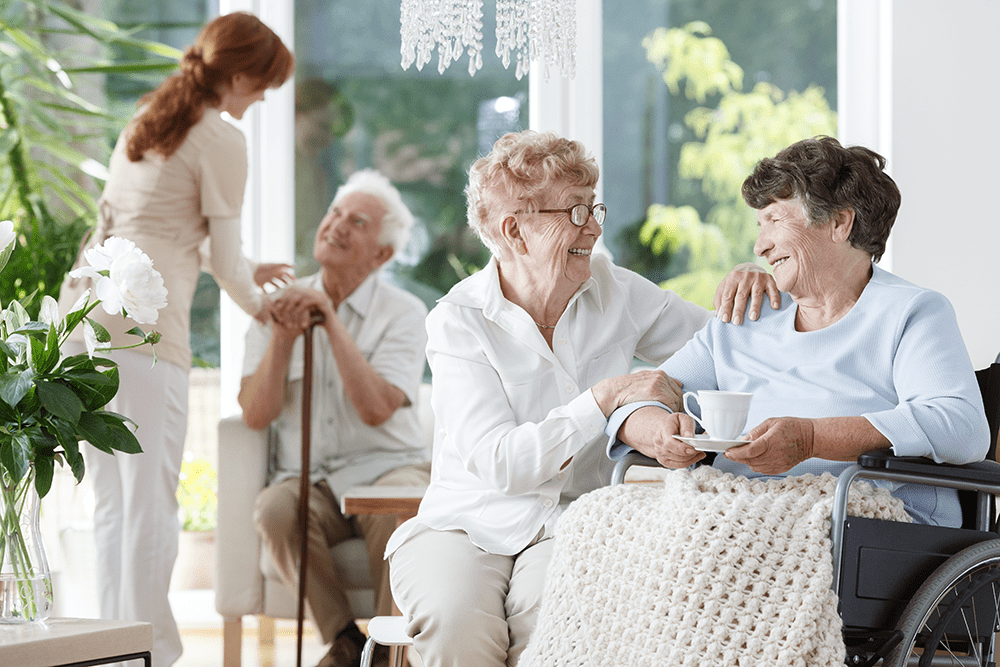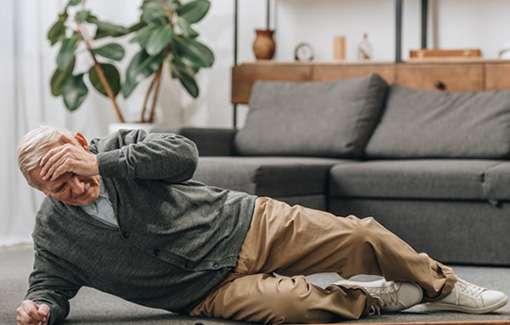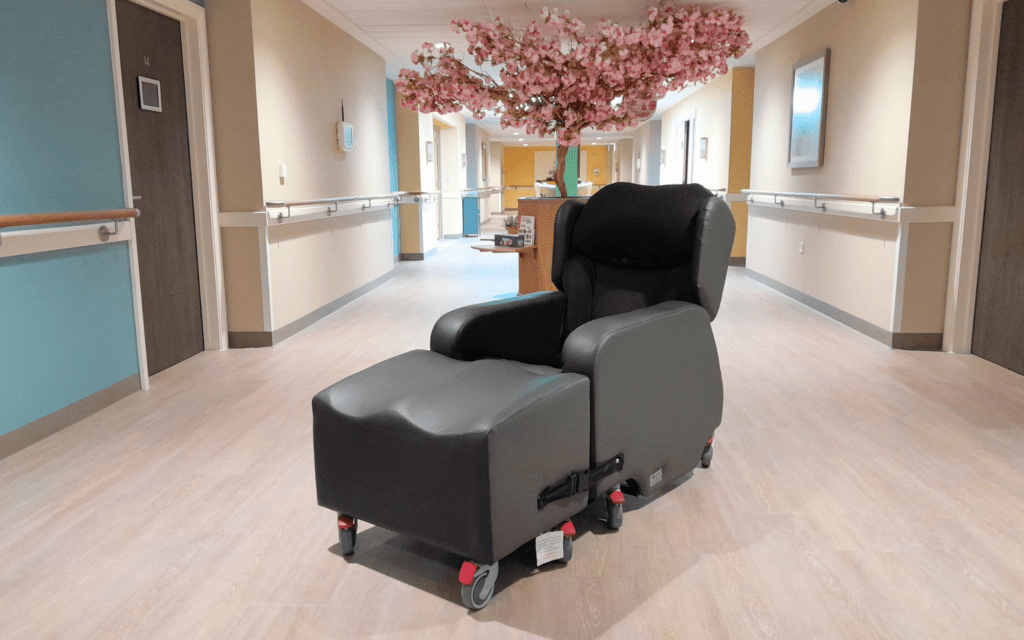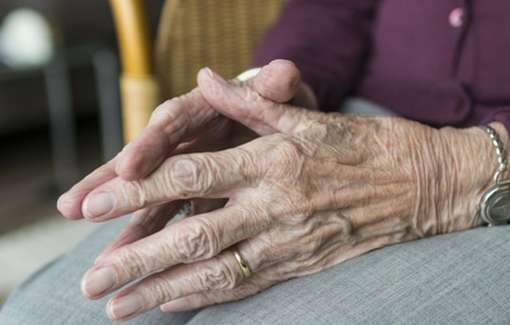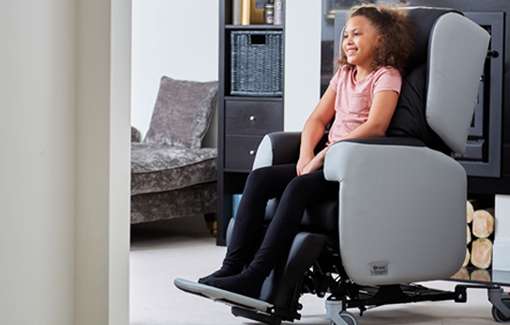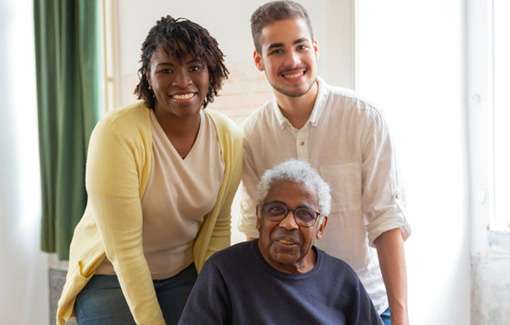People over 65 or the ‘silver generation’ are a growing segment of the population, currently 12.3m in the UK. The ‘ageing population’ as this is known places additional burden on the NHS when it comes to providing treatment for conditions commonly faced in old age, like arthritis, dementia and falls. Extra funding for community equipment is also required to help older people live independently in their own homes. Seating plays a large part in elderly care, which we analyse in this article to find out what chairs are best for elderly and disabled people.
Jump straight to…
Risks and Health Conditions in the Elderly Generation
As the body ages, it naturally becomes more susceptible to a decline in health and physical mobility. There are some common conditions that make up a large proportion of health issues suffered in old age. These are falling, arthritis, osteoporosis, and chronic pain.
The risk of falls is something that becomes more problematic when muscle mass decreases and balance issues arise. The combination of these factors makes it harder for older people to regain their balance if they have to move unexpectedly or suddenly. With brittle bones and issues like arthritis and osteoporosis, the consequences of falls can become more serious, especially if the person is left unattended. Read more here: How to Reduce the Risk of Falls at Home – Vivid Care
Arthritis affects the joints, causing stiffness, pain and immobility. It can affect hands, joints and feet, which to a lesser or greater extent affects an older person’s ability to get in and out of a chair. This is where the rise and recline function in seating becomes essential. For more tips on how seating can help with managing arthritis, read Specialist Seating for People With Arthritis – Vivid Care
Osteoporosis is a condition that reduces bone mass, making them more fragile and brittle. The right support, backrest and rise function are important features to protect clients who are more at risk of bone fractures. Read more here: The Best Chairs for Osteoporosis – Vivid Care
Chronic pain can be a symptom of underlying conditions like arthritis or back problems. Having comfortable and supportive seating can improve posture, provide therapeutic benefits and alleviate pain, going a long way towards improving overall health and wellbeing.
How Seating Can Support Older People
We know that comfort is a top priority for elderly or low mobility people who spend increasing amounts of time in a chair, which is why all of our chairs are designed with ergonomics, cushioning, comfort and pressure care in mind. A comfortable armchair will not only provide exceptional support, it should also help to reduce pressure points and promote good posture.
In addition to comfort, it’s important to have adjustability and a range of mobility available in your chair to cater to your unique needs, which is why we have developed a range of widely adjustable, tilt-in-space recliner and care chairs that are also compatible with most standing and transfer aids, so you can enjoy maximum independence and mobility wherever you are most comfortable.
Posture
At the core of good posture is pelvic alignment and creating a good midline position in the chair. The issues of pressure relief and posture are closely linked, so by starting with good pelvic positioning you will be well on the way to achieving better levels of comfort and pressure relief.
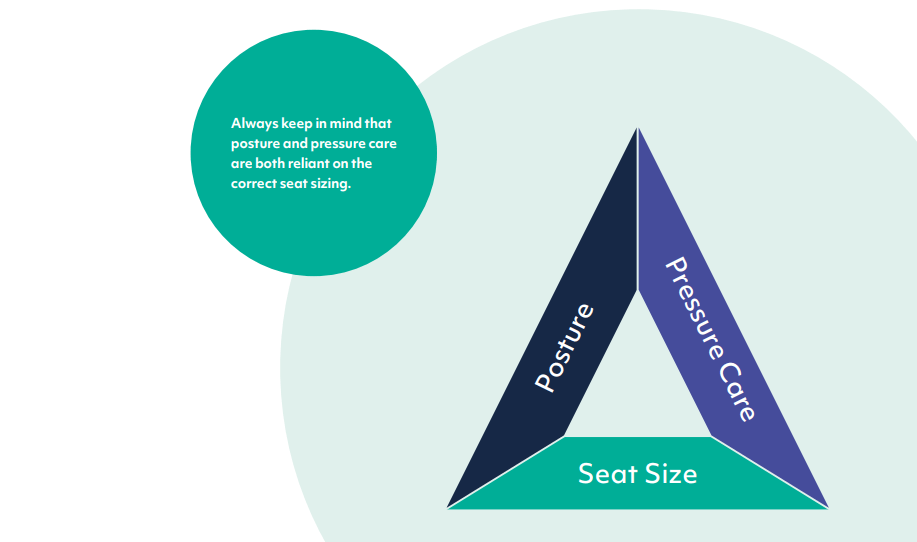
The tilt in space function available on most care chairs and riser recliners can vastly improve pressure care, as it maintains the sitting profile of the individual whilst redistributing the pressure by tilting them back in the chair, reducing pressure on the thighs and centralising their posture.
A forward lean or kyphotic curve in the back are common postural presentations with elderly patients. By tilting the patient back, this can help ‘straighten’ their posture if they are hunched. Certain backrests like the T-back or waterfall back are ideal for accommodating a curvature of the spine.
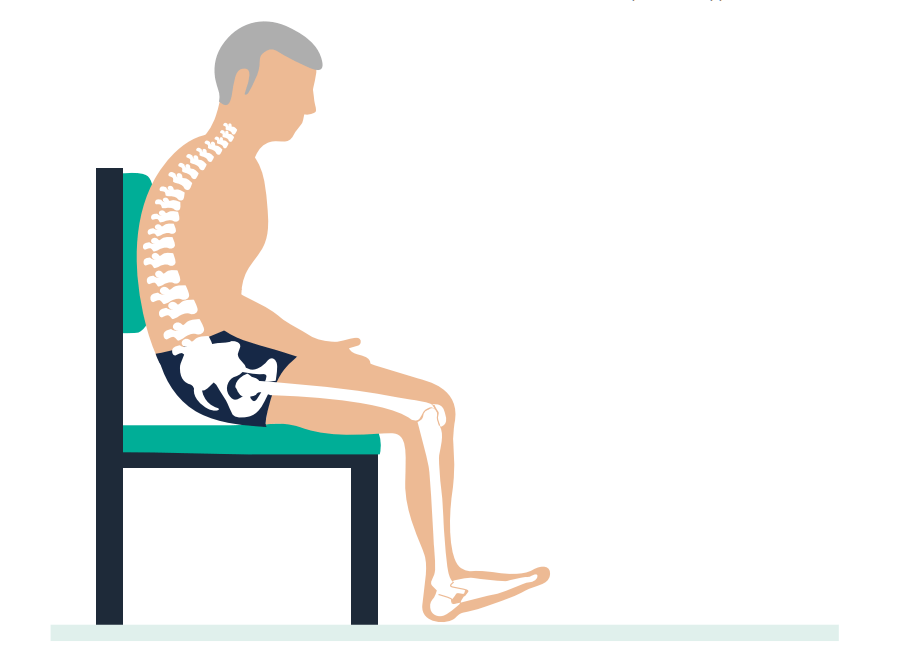
Kyphotic lean
Having the right seating improves posture and body alignment, and reduces joint pain and stiffness.
Pressure Relief
Skin integrity breaks down in old age and becomes more fragile, making older people more prone to pressure sores. Tilt in space can make a big difference in improving skin health. As well as reducing pressure points and shear friction, it improves blood flow and circulation by raising the legs and reducing swelling.
The type of fabric and overlay used plays a large part in reducing pressure on the skin. Contact surface fabric should be breathable and washable like dartex, which is soft and supple to the touch and has unique 4-way stretch properties.
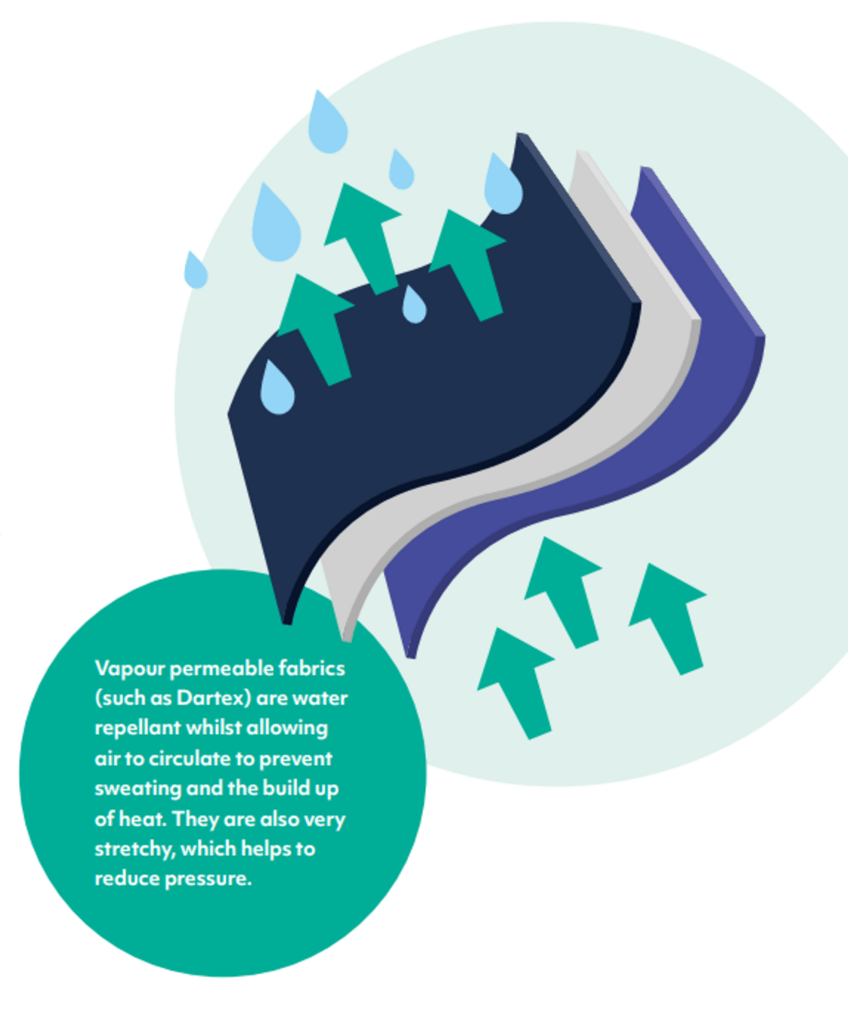
Properties of vapour-permeable fabric
The Lento range has different grades of pressure relief available, from medium risk foam to higher risk gel and air.
Reducing the Risk of Falls
As covered in a recent article “How to Reduce the Risk of Falls at Home”, the VELA chairs give older people the freedom to move around the home whilst staying safe from falls. Their wide wheelbase and large castors allow the user to move smoothly from one location to another, and the adjustable arm and seat height facilitate transfers and working at different heights.
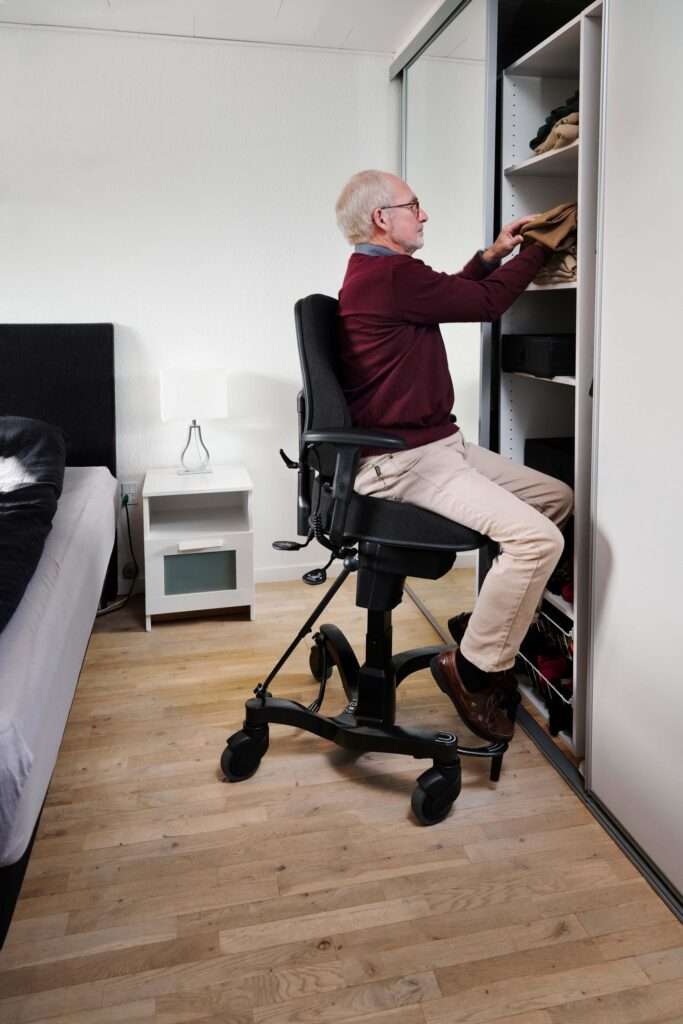
VELA chair
Having the right moving and handling equipment in place is important to prevent falls while transferring into and out of the chair. The Lento Mobile is compatible with the Sara Stedy standaid which is a really simple and effective device for transferring people from a chair to a toilet, bed or other location.
Other Benefits
Some of the more intangible benefits provided by specialist seating relate to improved social interaction and wellbeing. Social connection is important and has been shown to have a strong correlation with improved health and wellbeing. By using a portable chair like the Lento Mobile, patients in communal care settings can be moved easily from their room into day rooms where they can have meals, take part in group activities and interact with family and friends.
Aims of Suitable Seating
When looking at different chairs available for older people, first and foremost we need to establish what the goals and priorities are for that person.
The goals of suitable seating for elderly patients usually centre around one of the following themes:
- Promoting independence
- Assisting mobility
- Increasing comfort
- Managing symptoms associated with chronic health conditions
Once we have a clear picture of the main aims of assistive seating, we can start to build a picture of the kind of seating features we want to incorporate within the chair.
Adjustability
To increase comfort and manage symptoms we need plenty of adjustability within the chair. With adjustable seat depth, width and arm height, the Lento range has adjustability at its core. In the Lento Care Chair, the footplate height, angle and backrest recline can all be adjusted to maximise comfort in the chair. Dual motor chairs allow for independent movements of the backrest and legrest, which can be of extra benefit when finding optimal positioning.
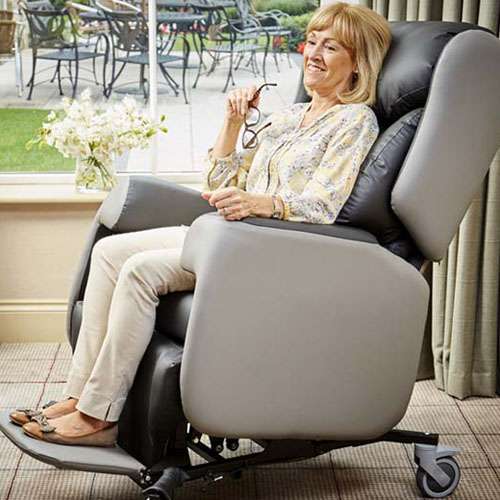
Lento Care Chair
Seat dimensions
The importance of measuring seat dimensions correctly cannot be underestimated, as postural problems can be worsened if the seat is the wrong size. See our seat measurement guide for helpful hints and tips on measuring seat size. Specialist Seating Sizing Form – Vivid Care
Tilt in space
Tilt-in-space comes at standard throughout our Lento range. This dramatically increases comfort, spreading pressure over the body whilst maintaining a 90-degree sitting angle. It also helps open out the shoulders for those with a hunched posture, improving their vision of the surroundings.
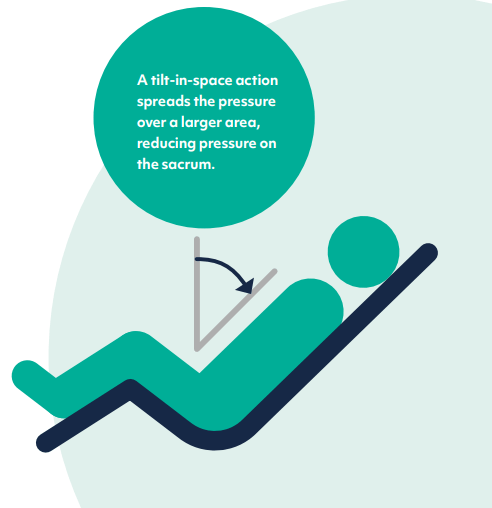
Tilt-in-space functionality
Incontinence
Managing incontinence can be an important issue for elderly people, which very much depends on the durability and type of fabric used. The design of the Lento minimises hassle when it comes to dealing with incontinence issues. The fabric is easily wiped clean with minimal seams or recesses, and the magnetic seat and backrest cushions can be removed leaving the base of the chair exposed for thorough cleaning and infection control.
Other Factors to Consider
To further promote independence and improve mobility, these other factors should be considered.
Armrests
Having the right height and type of armrest can be very beneficial when standing up, to give the user stability and support. A useful feature available with riser recliner chairs is wooden armrest caps which improve grip when standing up, particularly for those with arthritis.
Handset controls
For arthritic patients or those with dementia, simplified handset controls with larger buttons make life considerably easier.
Backrest type
The type of backrest can be specified to specific postural needs. Read our guide to different backrest for more information: A guide to backrests for care chairs and riser recliner chairs – Vivid Care Waterfall backrests are particularly suited to a curved posture, and the cushions can be adjusted and moved to make the patient as comfortable as possible. Adding lateral supports with the lateral waterfall back adds sideways support to prevent leaning to one side, if the client struggles to maintain an upright posture. The advantage of our Lento chair range is the backrests are removeable and can be swapped out for the most suitable backrest for each patient.
Different Types of Chairs and Their Features
Elderly people may find themselves spending more and more time seated as their mobility declines. So, they will often need a lounge chair that offers more support than the standard armchairs and sofas you see in furniture showrooms.
High back chairs and rise and recliner armchairs are two of the most popular choices for older people both in their own homes and in care home settings.
High Back Chairs
A high back chair has a backrest that extends up beyond the shoulders to provide support from the lower back all the way up to the head and neck.
These sturdy chairs are popular in care home days rooms because they are more affordable than riser recliners and don’t look like a ‘specialist chair’ which can help elderly residents to feel more at home.
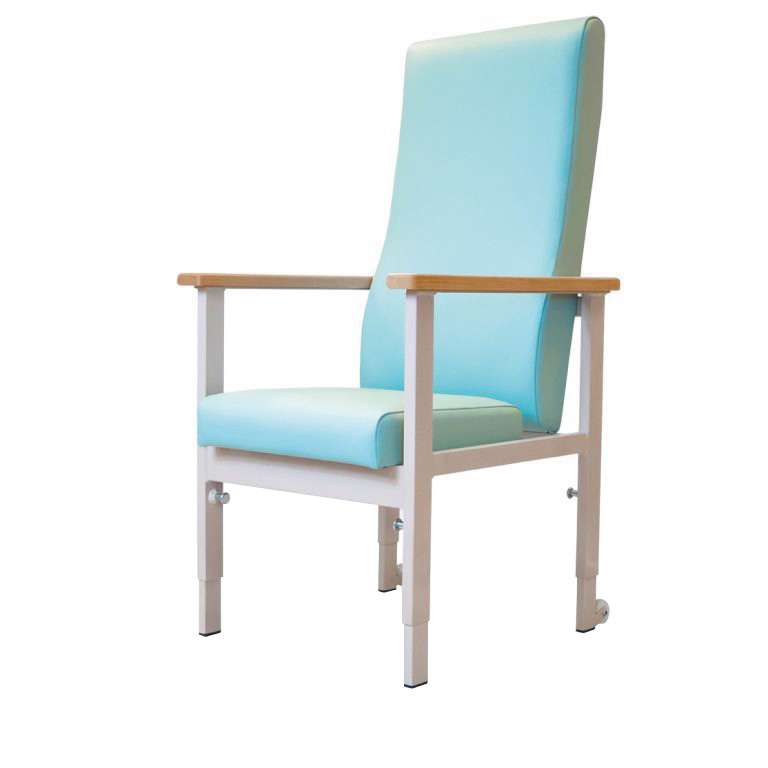
Unrivalled postural support
The design of a high back chair also provides lumbar support and takes weight off the shoulders. These types of chairs not only make the seated person more comfortable, but the design also encourages them to maintain the neutral back position needed for proper posture.
If you have an elderly relative or client who complains of neck ache or that doesn’t sit fully upright or slouches, then a high back chair might be the solution for them.
Comfort
Because a high back seat stimulates good posture, there is less chance of back ache, migraines and even stress. The design on high seats means the back is relaxed, there is less slouching which ensure less pressure on the spine.
Maintain independence and strength
Choosing a chair that maintains an upright posture also makes it easier for the seated person to get in and out of their chair. This mobility is very important for older adults as it aids independence and strength.
High back chairs also typically have sturdy armrests designed to further aid the user in standing independently. Having armrests that can support some body weight as they transition from sitting to standing.
Rise & Recline Armchairs
Rise and recline chairs are ideal for older people who still have a level of mobility and independence, but are at risk of a falling when sitting down or standing up. These types of mechanised armchairs are very popular with individuals who still live at home.
The sitting to standing support via the rise and recline action provides elderly users, relatives and carers with the peace of mind that they can safely get up unaided.
For couples or multi-user environments, riser recliner sofas boast all the orthopaedic postural support and comfort of a riser recliner armchair in a sofa that can seat multiple people.
Our Dales recliner range is built with elderly and low mobility users in mind. These electric recliners support a maximum user weight of 20 stone and have a range of styles, colours and motor options.
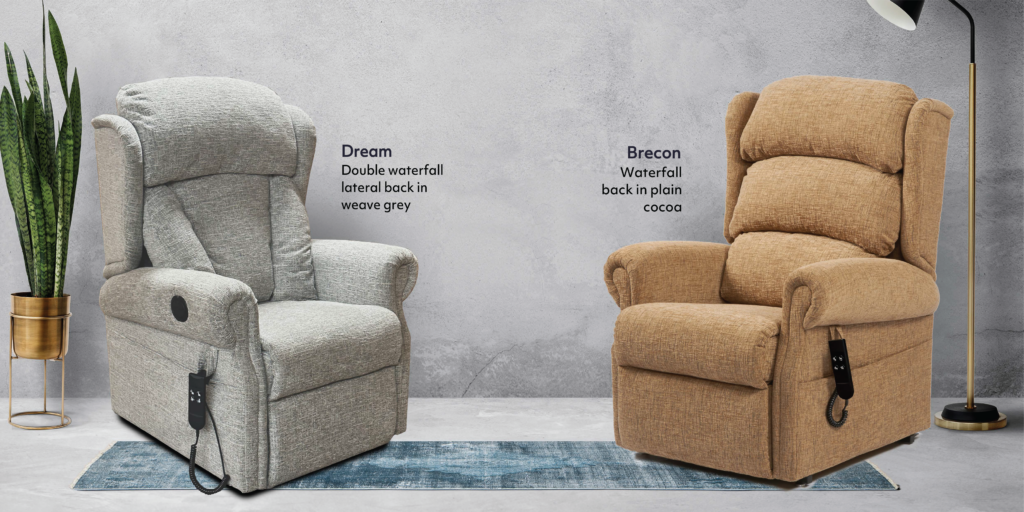
Dales Collection
Rise and recline action
At the press of a button, the chair tilts forwards and upwards to help someone raise to their feet smoothly and steadily. The chair continues to support some of the user’s body weight until they are fully standing, giving them time to stabilise themselves and reducing their risk of falling.
Sitting down can actually be even more difficult than standing for older people. It requires considerably lower body strength to steadily bring yourself down into a seated position! The rise recliner guides the user down slowly, so they don’t collapse down into the chair too early and risk injuring their lower back.
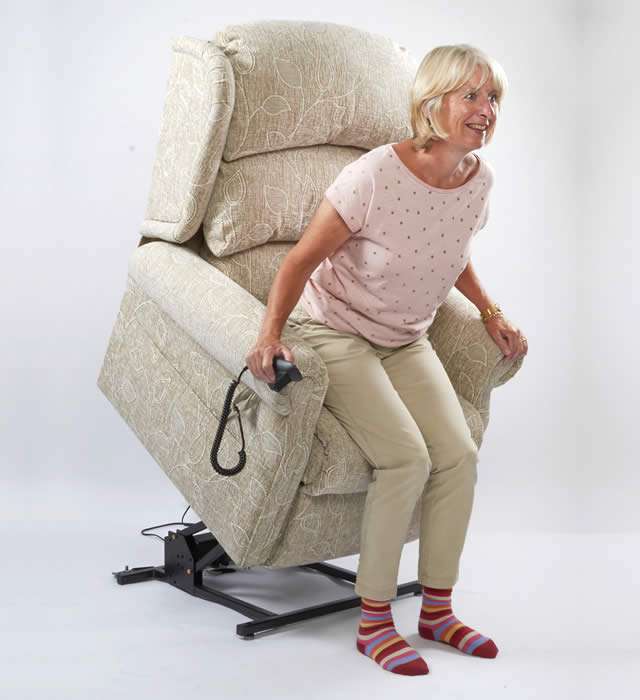
Electric riser recliner chair
Good for circulation and pressure redistribution
The recline action isn’t just designed for comfort, there are also health benefits. Elevating the legs improves circulation of people who may be seated for prolonged periods of time. In these cases, a riser recliner armchair can prevent and reduce swelling & discomfort in the lower legs — a common problem in elderly people.
Many rise and recline armchairs will feature some sort of tilt-in-space function. This allows you to tilt backwards and elevate your legs, therefore redistributing your weight through more of the surface of the chair. This helps to avoid pressure build-up in the posterior, back, elbows and other areas where pressure sores commonly occur.
Excellent postural support
Like high back chairs, rise and recline chairs are designed to offer good spinal support. As people age, muscle tone deteriorates which can make it harder to sit up straight.
Having a lounge chair with support built-in helps older people to maintain their posture and don’t experience deterioration, or even deformity, from sitting for long periods.
Rise recliners can be custom designed so that the seat size is perfect for the user. Seat depth, height, and width can all be adapted to provide support in the areas it is needed.
More comfortable for sleeping
For older people who tire easily and require sleep during the day, a rise and recline chair is a great option. At full recline, these chairs can lie back far enough to allow the user to sleep comfortably. This means the user can get the rest they need without having to go back to bed.
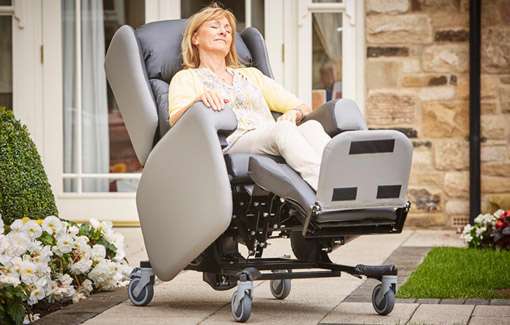
Funding Avenues and Streams
Your Local Equipment & Adaptations Service is a great place to start if you or your loved one needs seating to help them live independently. The qualifying factors for getting a loan chair vary from region to region. We carry out free no-obligation assessments with council OTs to help them specify seating and mobility adaptations for their clients.
Another route if you are looking for funding is charity applications, there are a large number of charities dedicated to supporting older people from a range of backgrounds, job and specific health conditions. Download our free database to research charities related to your needs: Vivid.Care Charities Database – Vivid Care
Conclusion
Comfort is at the heart of seating, so make sure you try out the chair and feel comfortable before going ahead with your purchase. Our assessment team carries out home assessments and will bring demonstration chairs suited to your medical and physical condition for you to try out.
Free & No Obligation Assessment
To get the best value out of your chair, don’t forget to factor in potential changes in your needs, if you have a progressive health condition like Parkinsons or Huntington’s. Future-proofing your needs in this way will allow you to maximise the value of your purchase, and build in additional features at the outset than can accommodate changes in your physical needs over time.
To research this subject in more depth, you can download a free copy of our seating assessment eBook that covers the importance of specifying the right kind of rise and recline chairs.




